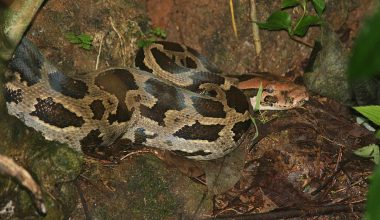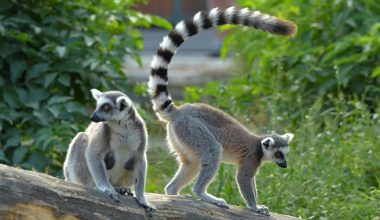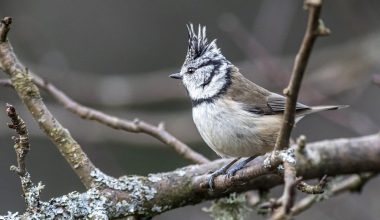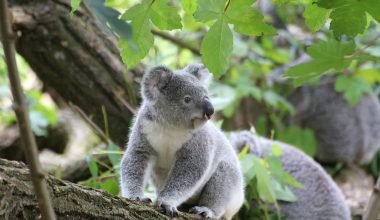The gecko is a type of lizard from the family Gekkonidae. As of now, 1000 species of geckos are known to humans and seen all over the world, except in Antarctica. Certain gecko species are endangered because of habitat loss and the introduction of new predatory species into their environment. Here is the list of 10 types of Geckos in Florida,
Geckos In Florida
1. Common House Geckos In Florida
Common House Geckos are one of the types of lizards in Hawaii that can be recognized with small granules and vary in color from pale yellow to grayish-white. The gecko species is native to southeast Asia and the Indo-Australian Archipelago, however, now it has been reintroduced to many other countries such as the United States, countries in South and Central America, Africa, South Asia, and the Middle East. These are solitary and territorial creatures and can be best defined as quinodiurnal which means they bask in the sun during daytime and forage at night.

Image Source: Wikimedia
2. Mediterranean House Gecko (Hemidactylus turcicus)
The Mediterranean house gecko’s scientific name is Hemidactylus turcicus in the Mediterranean area and has spread to many parts of the world. The body length of the gecko species is upto 15 cm in length and as per its Latin name it his referred to referred to as the Turkish gecko. Talking about the appearance, it is a small lizard species along with sticky toe pads, vertical pupils, and large eyes that lack eyelids. The avarage lifespan of Mediterranean House Gecko is upto 8 years in the wild. The dietary habit is carnivores in nature and feeds on insects, moths, spiders, and small roaches and are attracted to outdoor lights in search of these prey.

Image Source: Wikipedia
3. Ocellated Gecko (Sphaerodactylus argus)
Ocellated Gecko common names include the ocellated gecko, the ocellated thick-toed gecko, and the Cradock thick-toed gecko is a species of thick-toed gecko that belongs to the family Gekkonidae. Talking about appearance, these species are colorful, mottled little gecko and have a smooth body which is usually covered in dark-edged white spots. The gecko species love to thrive on the ground among debris and under rocks. It used to lay a clutch of two tiny eggs in the summer.

Image Source: Cataloging Nature
4. Madagascar Giant Day Gecko (Phelsuma grandis)
Madagascar Giant Day Gecko is one of the largest living day geckos that can reach upto 22 cm (8.7 in) in total length. Talking about appearance, the body color is light green or bluish-green. Some scales often have a light color and a rust-coloured stripe extends from the nostril to behind the eye. The back side of the gecko species is brownish or red-brick colored dots which may form a thin line along the mid back. The mating season of the gecko species is between November and the first weeks of April and the female lays up to 6 pairs of eggs.

Image Source: Wikimedia
5. Yellow-Headed Gecko (Gonatodes albogularis)
The yellow-headed day gecko scientific name Phelsuma klemmeri is a small diurnal species of gecko that belongs to the family Gekkonidae. The common names of gecko species include Klemmer’s day gecko, the neon day gecko, or the cheerful day gecko is endemic to northwestern Madagascar. The primary diet of geckos includes insects and nectar. The scientific name klemmeri comes in honor of German herpetologist Konrad Klemmer. The gecko species is active during the day (diurnal) and likes to bask. It often lives in small groups.

Image Source: Andrew
6. Tropical House Gecko (Hemidactylus mabouia)
Tropical House Gecko is one of the common geckos in Florida and is a species of house gecko native to sub-Saharan Africa. They are now introduced to other countries by humans such as North, Central, and South America, and the Caribbean. The body length of gecko species is upto 13 cm in length and the average weight is between 4 to 5 grams. The avarage lifespan of tropical house geckos is upto 3 to 5 years in the wild. They are nocturnal and have very large eyes which are useful in spotting prey in low light conditions. The gecko species can change color (slowly) from light brown to darker brown to better match its surroundings.
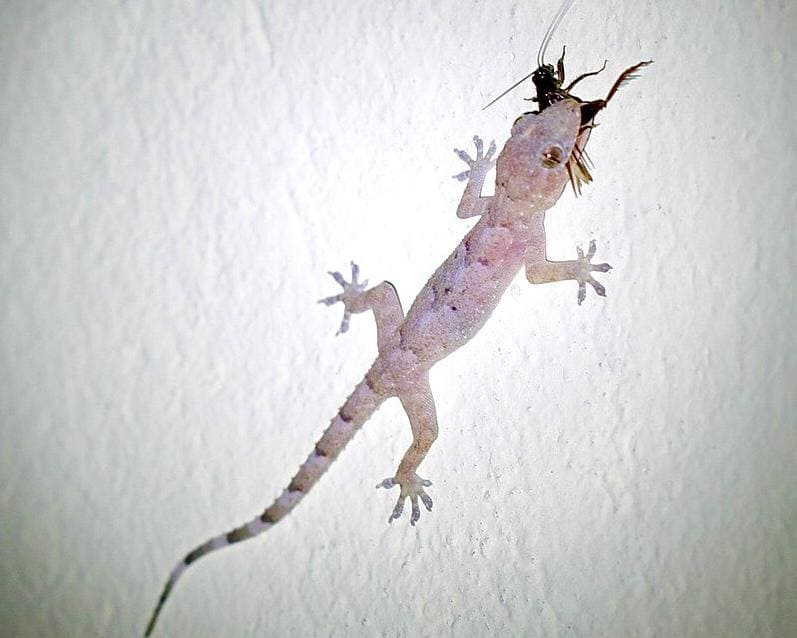
Image Source: Wikimedia
7. Ashy Gecko (Sphaerodactylus elegans)
The ashy gecko’s scientific name is Sphaerodactylus elegans is a species of gecko native to Cuba, Hispaniola, Gonâve Island, Les Cayemites, and the Dominican Republic. They have been also introduced to a few small islands in southernmost Florida, and have a good population now. The color of the gecko species ranges from a red tail to a blue tail, with a green midsection, and always thin horizontal bands of black across its body. The avarage lifespan of an ashy gecko is between 10 to 20 years in the wild.
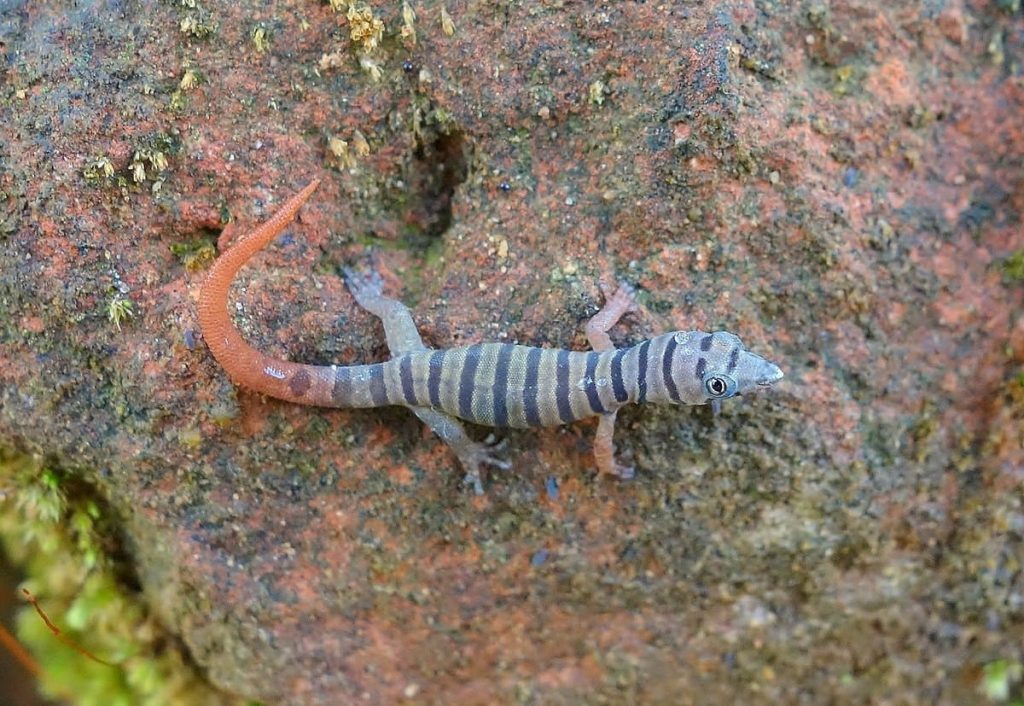
Image Source: Wikimedia
8. White-Spotted Wall Gecko (Tarentola annularis)
White-Spotted Wall Gecko is one of the common geckos in Florida native to Northern Africa. The scientific name of the gecko species is Tarentola annularis and locally known as ringed wall gecko in its locality. It is primarily found in Saharan and sub-Saharan areas of Africa, however, now it has been introduced in other parts of the world, including Miami Florida. In Florida, they primarily dwell on buildings and walls of human habitation. The primary diet includes insects such as brown or black crickets, mealworms, waxworms, or calciworms. The avarage lifespan of white spotted wall geckos is upto 5 years, however, it lays eggs throughout the year.
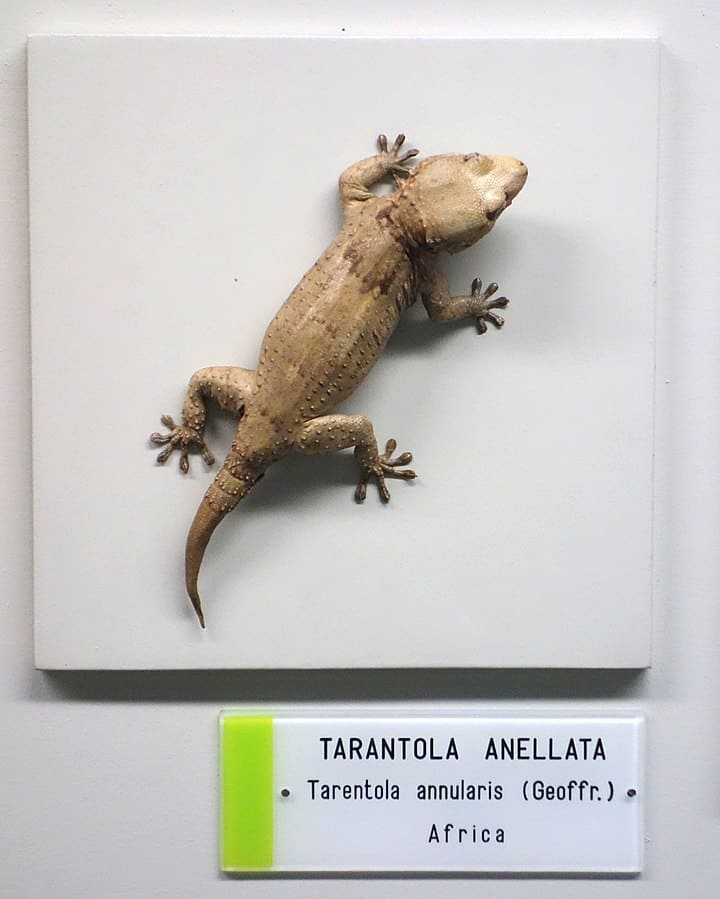
Image Source: Wikimedia
9. Flat-Tailed House Gecko (Hemidactylus platyurus)
Flat-tailed house gecko’s scientific name is Hemidactylus platyurus is a species of Gekkonidae native to southeastern and southern Asia. The other common names include frilled house geckos or Asian house geckos and belong to the family Gekkonidae. It is one of the common geckos in Florida that can be identified by the flat tail, fringed with loose skin., howvever, the color and marking can vary from plain grey to an attractive pattern of dark brown stripes or diamonds along the spine. The primary diet includes small insects attracted to artificial lighting.
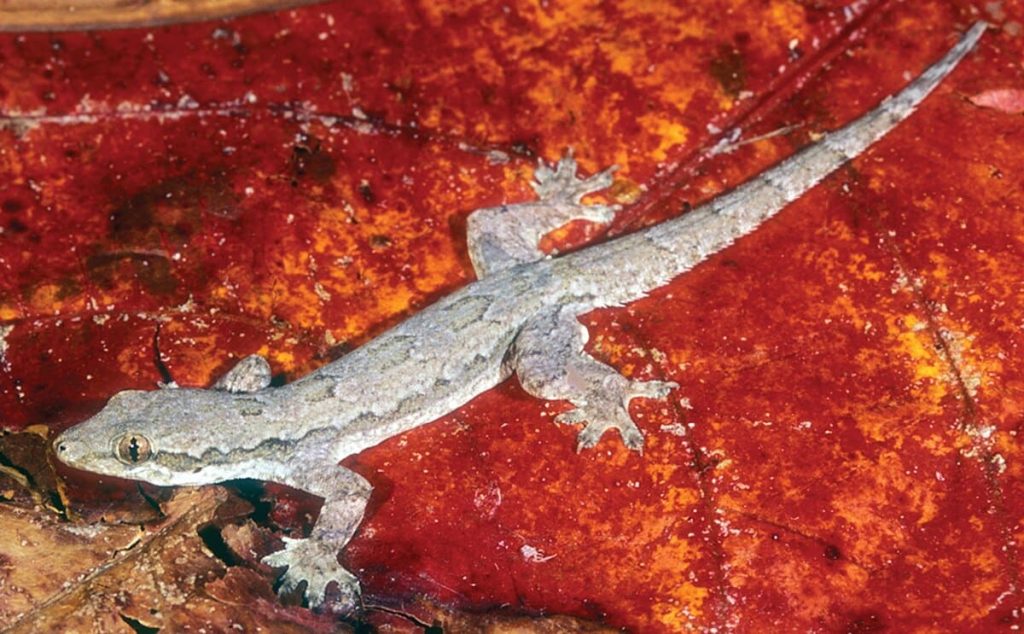
Image Source: Wikipedia
10. Tokay Gecko (Gekko gecko)
The Tokay gecko’s scientific name is Gekko gecko is a nocturnal arboreal gecko species that belongs to the family Gekkonidae. I’m is one of the largest gecko species that grow between 20 to 35 cm in length and the average weight is between 150 to 400 grams. The avarage lifespan of Tokay geckos is between 10 to 20 years in the wild. It is generally gray with red speckles, however, changes color depending on the environment. The dietary habit is carnivores in nature and feeds on insects and small vertebrates.
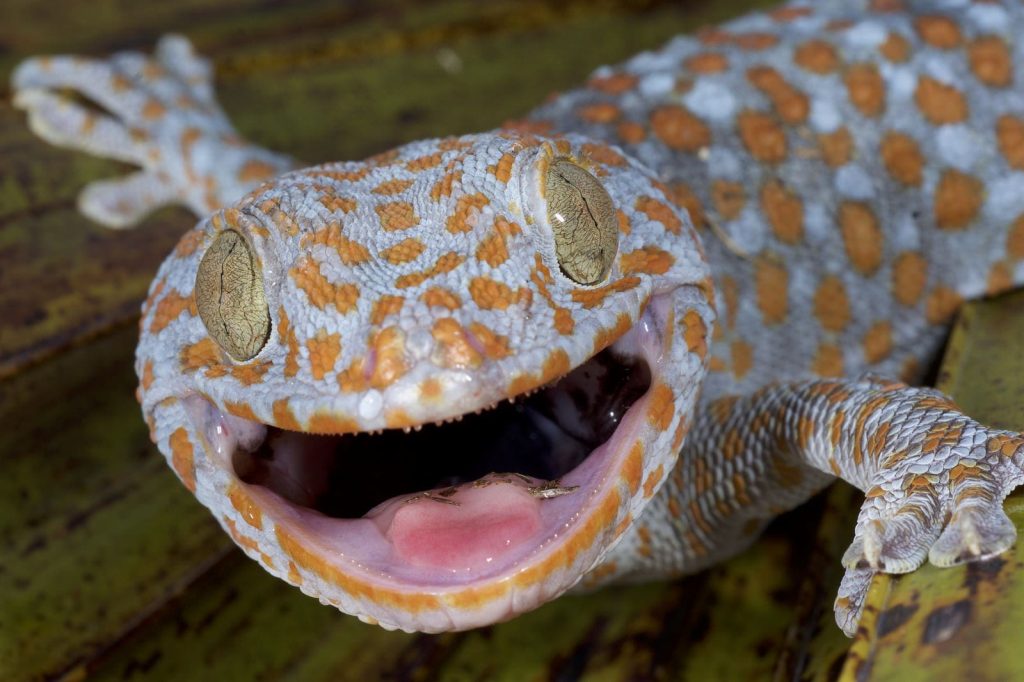
Image Source: FWC Fish and Wildlife Research Institute
These are some of the types of geckos in Florida. Kindly share and post your comments.

